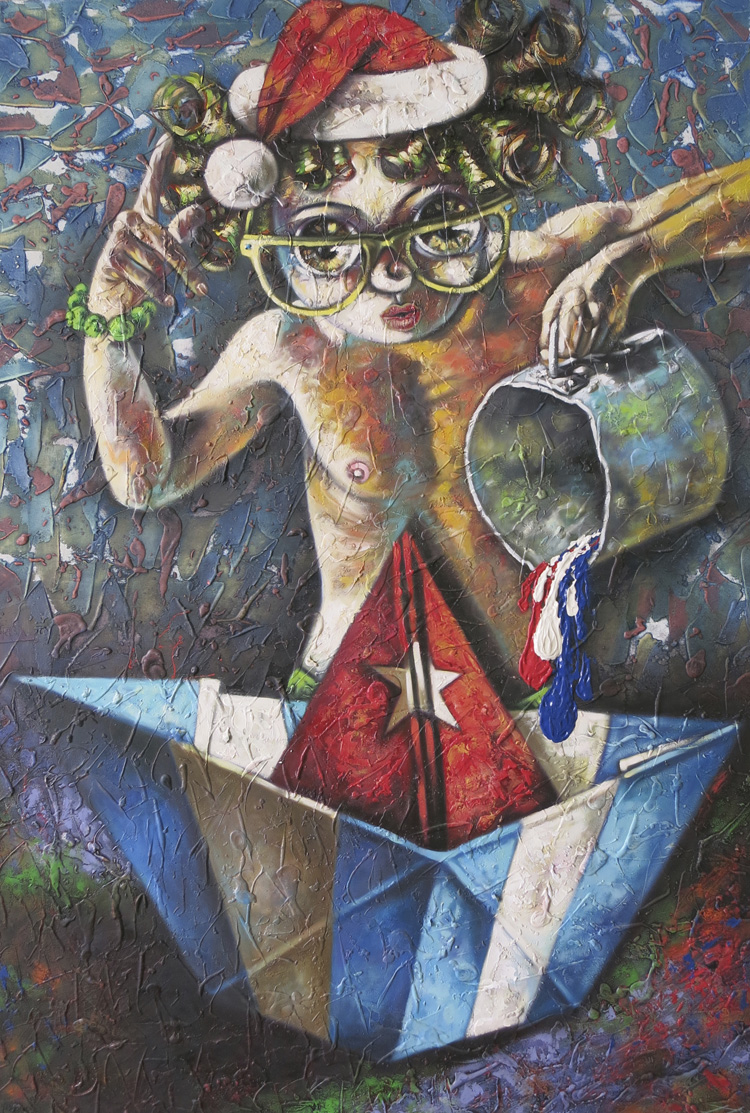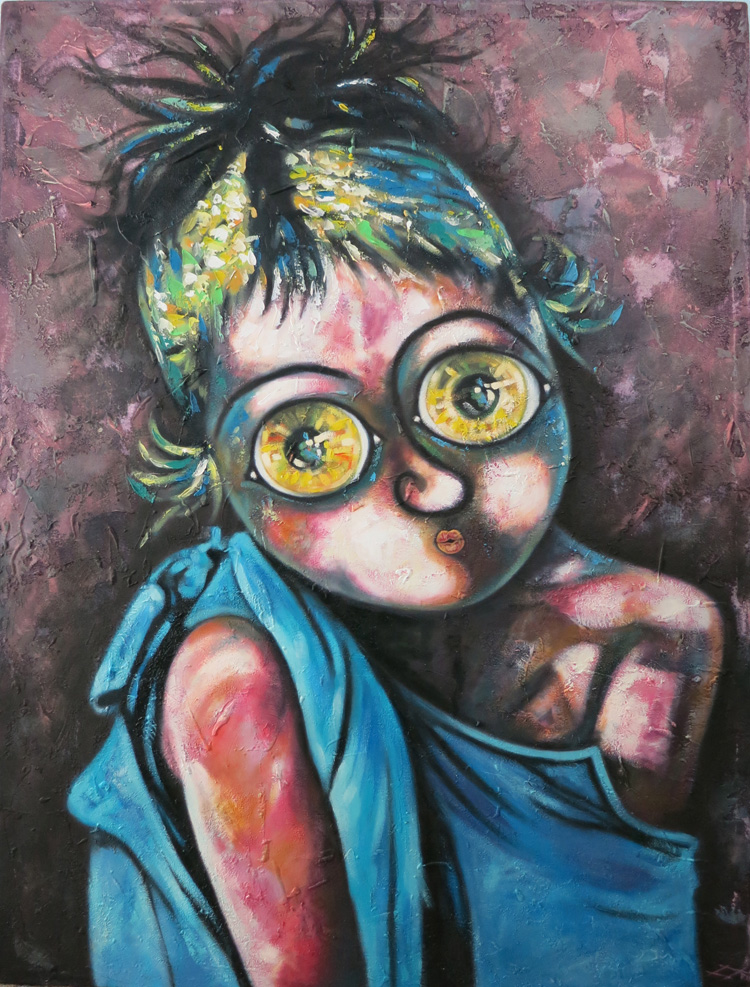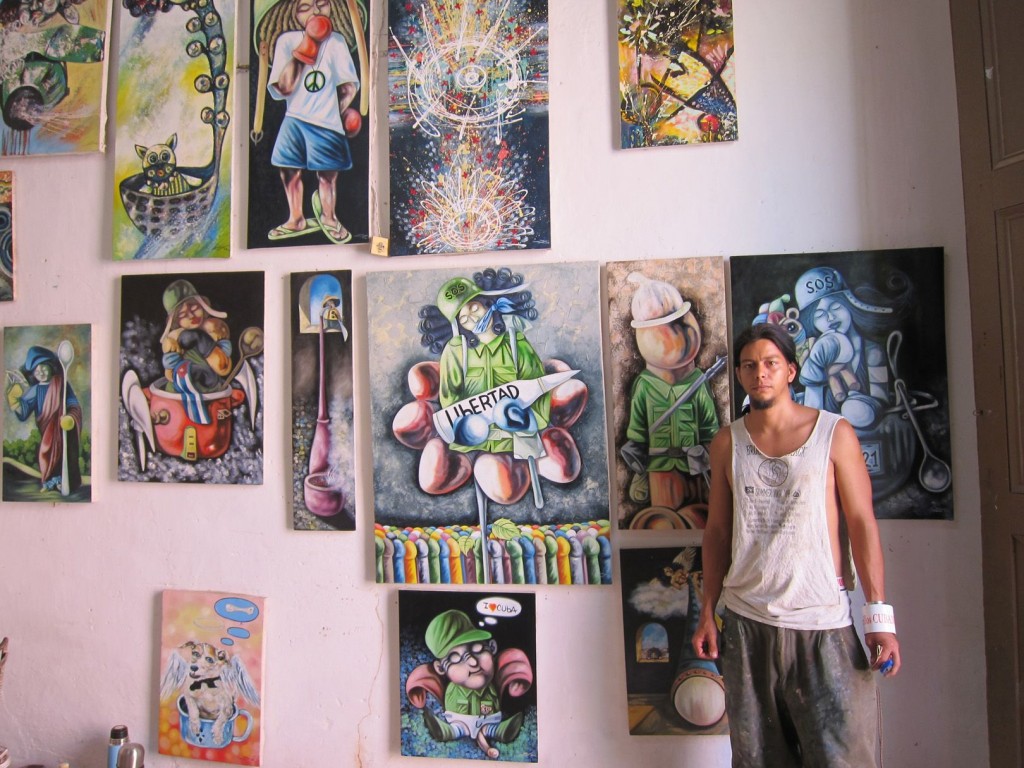Maikel Pérez is coming into his own as an artist as Cuba begins a dramatic change. Noah Klein, assistant to the editor-in-chief, talked to Pérez about his artwork, its future and the artist’s process in our Spotlight artist interview. Translation provided by designer Marc Bernstein, a friend and associate of Pérez.Â
Maikel, please tell us a little bit about yourself, your artistic background, and what your art centers on.
I have always thought of myself as an artist who shows constant evolution and growth in his artwork. My aim is to create works which convey certain messages to the public. I have always liked to experiment with different materials. I was born in 1986 in Sancti Spiritus, a province of Central Cuba. From a very young age, I was inclined towards the art world. So, I was admitted to a 4-year programme of studies at the Escuela Instructores de Arte de Villa Clara (School for Art Instructors of Villa Clara). In 2004, I finished these studies, and, immediately afterwards, I matriculated to professor in art instruction for intermediate and advanced levels, where I worked and studied simultaneously — a very favorable situation for finishing my studies. During my last three years, I was an art professor at the Universidad de Ciencias Pedagógicas (the University of Educational Sciences) in my province, where I gave classes and completely disassociated myself from any art related anxieties as a creator of art. Five years ago, I decided to move away from teaching and dedicate myself to painting.
My artistic vision is that when people view my work, it makes them reflect upon childhood and the desire to dream, which my work transmits or expresses, so to speak. I think that every work is a dream which needs to be explored, and not left in a vacant space. It needs to be given the opportunity to express an idea.
Do you have an artistic process? If yes, what is it? If not, why not?
I think all my work is in an artistic process of constant change which amplifies my anxieties as a creator. Artwork, which is in constant development, evolves, grows and develops within itself. It gives a way to expand an emotional trajectory loaded with color and ideas.
Have you ever worked in other mediums besides oil painting?
I use several different materials, some of which include oil, tints, acrylics and synthetic paints. These materials give me the possibility to experiment broadly and diversely in my paintings, and not interrupt or break this process of growth, which is on a course of its own, so to say.
Some of your paintings have a “textured†quality to them. Could you tell us the reasons for that?
The mixing and interlacing of textures is fundamental to my work. This could possibly be a result of my initial training in engraving, sculpture and abstraction.
The textures aim to transmit forms and intensity of color, which shows in visual relief, which is capable of projecting the forms’ and colors’ intensity to the public, which is my main objective.
What is the situation for artists in Cuba?
In the Cuban art world, not everyone is privileged enough to be able to participate in a Bienniale or a prestigious gallery, be it for economic reasons, or work obligations that sap one’s creative vigor. However, alternative venues do exist to show work. They are not necessarily suitable, but a public always shows up to these installations giving the artist a chance to interact with his audience.
I know many of your paintings comment on current political events. Could you please tell us if the current political climate between the United States and Cuba has affected your work? Why or why not? If yes, How?
I think the political situation in Cuba is tied to the work of all artists conditionally, or unconditionally, as it is something that we live with on a daily basis. Many artists express political ideas in their work, which facilitates their liberty, and their frustration to say something. I do not believe my works are entirely political, as they are more an analysis of reflection, which is essentially what I desire to convey. Many of my fellow artists in the studio, expo and the art world, catalog my painting as a reflection of myself: in some respect they see my ideas along with my face in the work.
What is your opinion on the past political climate of Cuba, and subsequently, the current?
Our country is giving itself the opportunity to magnify its artistic growth, and join a market with these new relations. However, it will be a slow process that will prove to be favorable for both countries [USA and Cuba] who are on their way to a mutual understanding.
Your friend, Marc Bernstein, has commented to me in private that he sees your “Pour†piece (captioned left) as a seminal work. Do you agree or disagree? Why or why not?
Yes, I think that this last piece is strong in expressing a more robust creative concept; be it in its textures, or its colors and ideas, in which is seen a progressive evaluation of my paintings, in an ascending scale to a level of reflection for the audience and a kind of symbolism, with the use of key elements which underscore these ideas and cannot be separated from the concept.
How do you want you and your art to be remembered?
I have always wanted my art to be remembered as work that experienced an evolution of reflection for each viewer in general. It should not be seen as decorative work to just fill a space, but paintings which express ideas in constant movement.
Click here to read the interview in the original Spanish.












